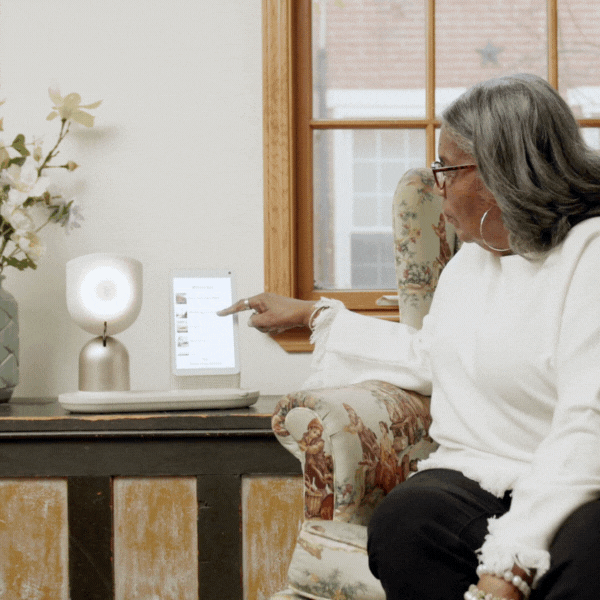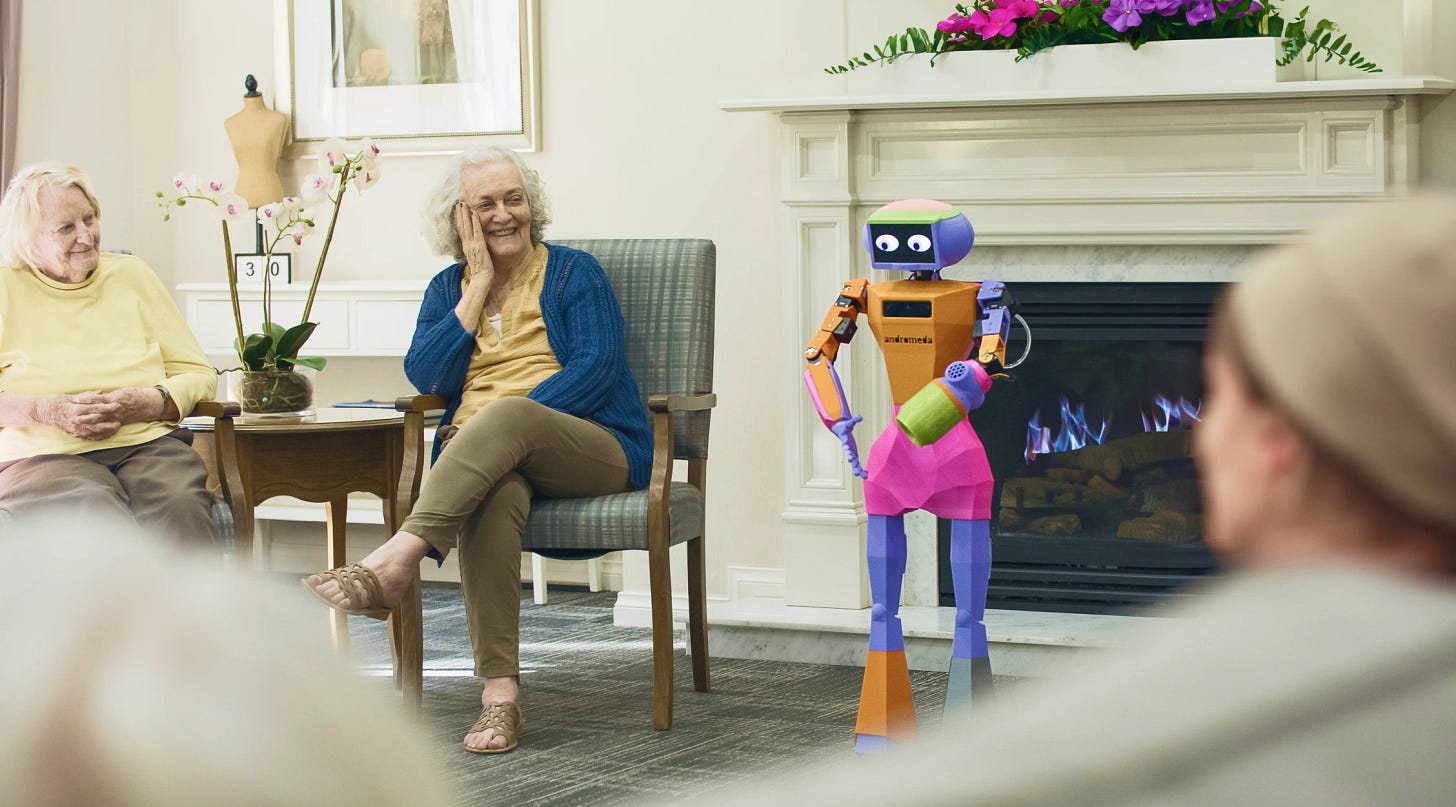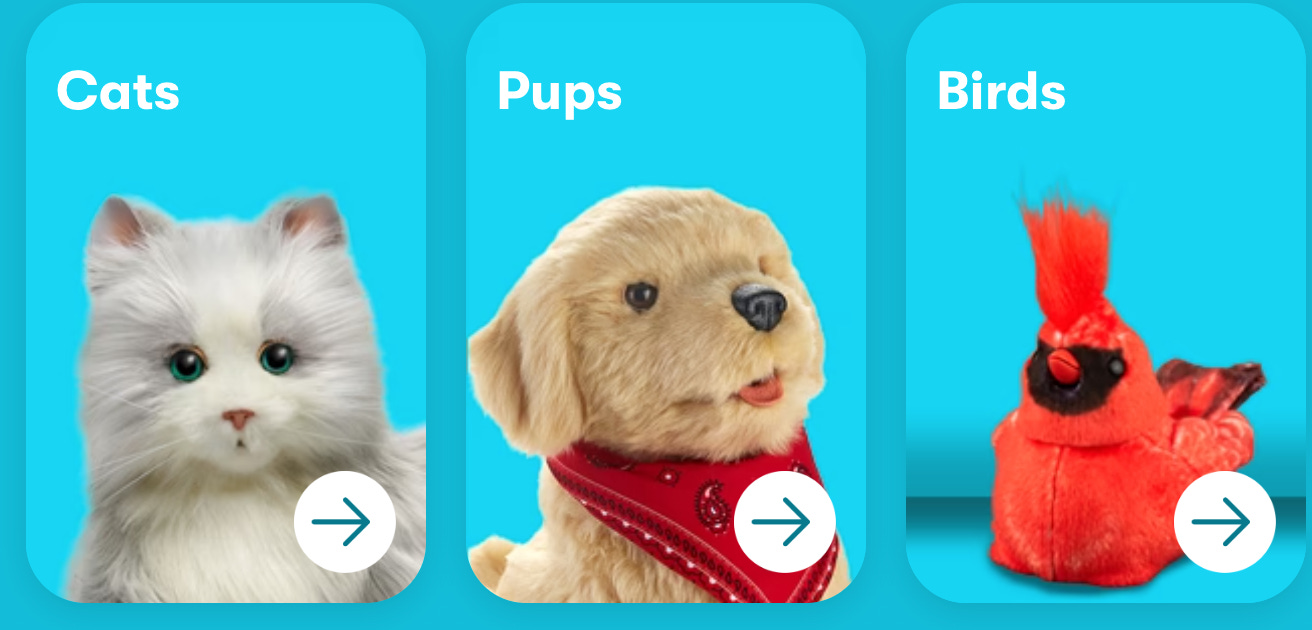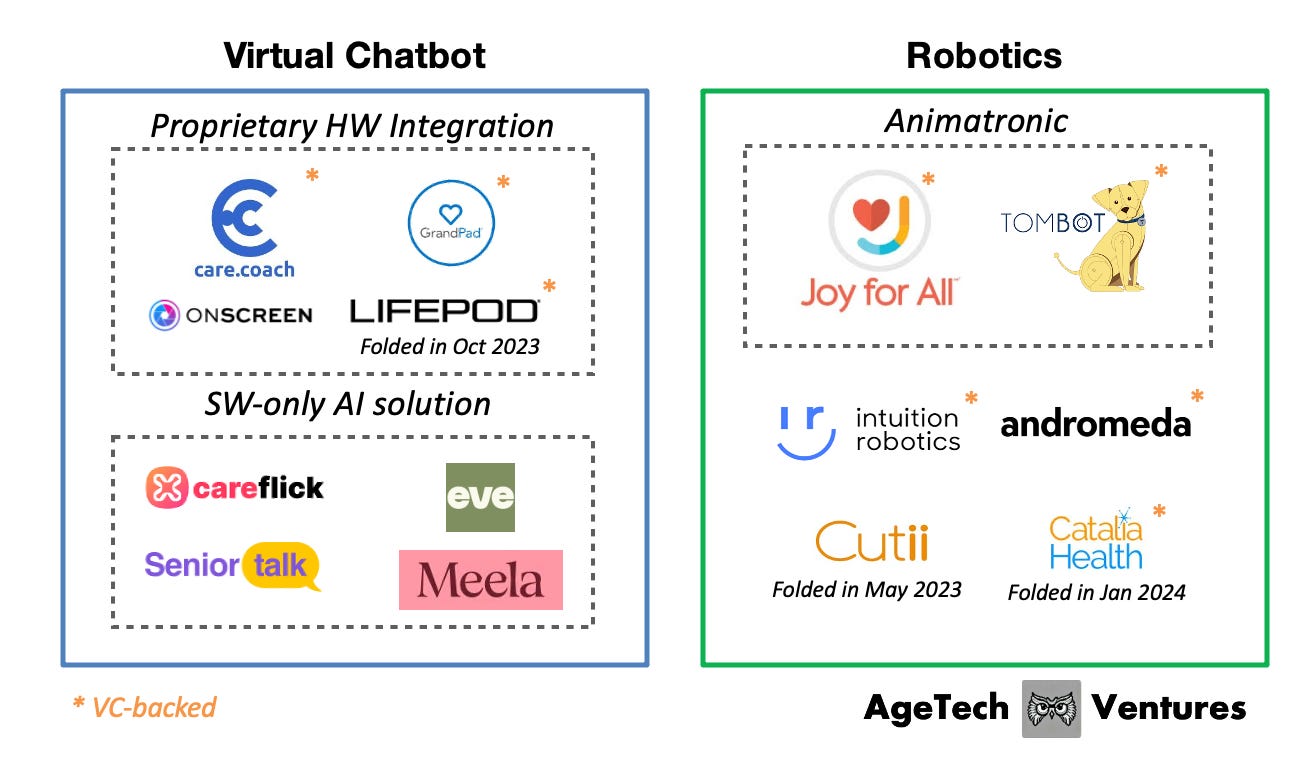#7 Social Companion Tech Market Map
Can AI help to address the loneliness crisis? A survey of the landscape of social companion solutions for older adults today.
In 2023, the US Surgeon General declared loneliness an epidemic:
Loneliness is far more than just a bad feeling—it harms both individual and societal health. It is associated with a greater risk of cardiovascular disease, dementia, stroke, depression, anxiety, and premature death. The mortality impact of being socially disconnected is similar to that caused by smoking up to 15 cigarettes a day, and even greater than that associated with obesity and physical inactivity.
Dr. Vivek H. Murthy 19th and 21st Surgeon General of the United States
Unfortunately, older adults are on the front lines of this issue:
One in three older adults report infrequent contact (once a week or less) with people outside of their homes
Loneliness has been shown to correspond to a 45% greater risk of death, and a 40% increased risk of dementia
These health consequences translate to a large financial impact. According to a 2017 study by AARP, lack of social contact is associated with an additional $6.7B of Medicare spending annually
Given the scale of the problem, might technology play a role in providing part of the solution?
We live in an exciting time where large language models (LLMs) have advanced conversational AI capabilities by leaps and bounds. Today, everyone can access human-like, contextually relevant responses to any imaginable prompt through technologies like ChatGPT and Google Gemini. Though social companion technology has historically seen low adoption—particularly among the elderly—these recent developments raise the question of whether it’s finally ready to deliver scalable social support.
PARO: The First Robot Social Companion for Older Adults
Technologists have pursued digital remedies to combat loneliness for decades. PARO, a baby harp seal invented in 2001 by Dr. Takanori Shibata, is one of the earliest examples of social companion tech for older adults.

PARO has many design features to make it more sociable. PARO weighs about 6 lbs (3 kg), mimicking the weight of a baby. It responds to light, noise, and touch like a living being. The baby harp seal also gets sleepy at night and is more active during the day.
Because PARO has been around for 25 years, there are more than 60 academic papers written on its impact. Among users with dementia, PARO has been shown to alleviate negative emotions and improve social engagement. Multiple studies have also found that PARO leads to improvements in positive emotions and perceived quality of life.
Despite its rich history, however, PARO’s adoption remains limited, and only a few thousand units are active today.
Empirical research suggests that PARO faces multiple barriers to adoption:
Relationship with human caregiving: Caregivers, staff, and researchers flagged concerns that PARO dehumanized care. There are concerns that PARO could be seen as a replacement for human interaction as opposed to a complement to it.
Variation of long-term outcomes: Not everyone adjusted to PARO in the same way. In some cases, older adults became reliant on PARO and experienced negative impacts upon PARO’s removal. In other cases, PARO would lose effect over time.
Costs: The cost of PARO is high (each unit sells at around $6000). This makes the solution cost-prohibitive for most older adults and their families. Oftentimes, PARO would be purchased by healthcare organizations where government support for assistive technologies is sometimes available.
Stigma: Some older adults, particularly men, felt like they were being infantilized and treated like children when asked to interact with PARO, particularly given that PARO was seen as “toy-like”. Individuals reported being embarrassed about interacting with the robot.
While PARO is designed for people with dementia, these hurdles highlight the broader adoption challenges of social companion technologies: what do our AI-mediated interactions reveal about our human relationships and connectivity? How might long-term “relationships” with AI affect our mental health and well-being?
These questions remain open, and rapid technological progress is bringing us ever closer to answering them.
ChatGPT: A New World for Conversational AI?
ChatGPT’s release on Nov 2022 marked a turning point in the role of technology in social companionship. Armed by large language models (LLMs), developers were now able to facilitate more natural, organic, and complex human-computer interactions. This has ushered in a new era of social companion tech, where AI companions are good enough to achieve almost mainstream adoption.
A recent study by Brigham Young University found that up to 1 in 5 adults in the United States (19%) reported that they had chatted with an AI system meant to simulate a romantic partner. And although one might expect LLM adoption to be the exclusive prerogative of younger adults, the same study found that 15% of men and 10% of adult women reported that they have chatted with a virtual romantic companion.
This trend is reflected in a growing cohort of companies that specifically use technology to target the social companion needs of older populations, and here we will cover what some of them are.1
Social Companion Tech Market Map
As I did research on the space, I noticed that the form factor of the product would determine the features it would have.
The form factor of a technology is the physical characteristics the product has (or lack thereof, in the case of pure software solutions). In this case, some companies chose to go with robotics solutions with sensors and actuators that would move based on the environment and the user’s behavior. Other companies developed virtual chatbots that would live either on proprietary hardware with screens (e.g., tablets) OR on any device as a (device-agnostic) pure-software solution.
In my market map, I chose to include recently folded companies in the space as well to reflect the challenging nature of the space, particularly for hardware companies.
Virtual Chatbots
Broadly speaking, virtual chatbot solutions have the following functionality:
Everyday personalized conversation, enabled by the latest LLM technology
Health coaching (e.g., medication and health reminders)
Real-time alerts to the circle of care (e.g., family members, caregivers) if something is wrong
There is a clear bifurcation in the space between proprietary hardware (“HW”) solution providers that have been around since the 2010s and software-only ("SW-only”) entrants that were founded after the recent advancement of LLMs.
Given that most consumer electronics are not built with the older adult in mind, proprietary HW allows developers to have more control over the user experience and incorporate more design features with the older user in mind.
However, this custom design comes with a higher price tag. As an example, GrandPad sells senior-friendly tablets at $65/month, and includes a blue owl Grandie as its virtual companion offering within it.

This is more than twice as much as the $20-30/month price tag of SW-only AI solutions.
Despite their lower price point and access to cutting-edge LLM capabilities, software-only entrants have yet to demonstrate meaningful traction in the category. All the players appear relatively nascent and none of the SW-only entrants have raised venture-backed rounds.
Robotic Solutions
Moving beyond the virtual chatbot interface allows companies to add additional functionality based on the hardware capabilities of the robot.
ElliQ (from Intuition Robotics) has a screen, a camera, and a little robot on the side. Because ElliQ is always on, users can interact with ElliQ throughout the day with minimal effort. ElliQ will also prompt conversation based on the body language of the user. Users can also use ElliQ to video chat and connect with friends.
ElliQ is the most well-funded start-up in the social companion tech market map, with a total of $81M of funding from Seed - Series C. In 2023, NY Office of Aging partnered with Intuition Robotics to roll out ElliQ to 800 New Yorkers.
Despite significant funding, ElliQ is only deployed in thousands of homes, so adoption is still relatively early.

While ElliQ is a primarily direct-to-consumer/direct-to-government solution, Andromeda’s Abi sells to aged care providers to provide both 1:1 companionship and group activity facilitation.
As a mobile robot, Abi can engage with groups of people with a wide range of physical and mental abilities at the same time. Abi’s bright color is not only meant to spark joy but also allows the robot to be easily identified by older adults with vision problems.

Robotic Solutions - Animatronic
Most products on our market map target cognitively healthy older adults, leaving those with dementia underserved. PARO blazed the trail in targeting this group; Joy for All and Tombot have since followed with similar animatronic companions.
Both companies have created pet-shaped robots that forego speech; instead, they respond to touch and gentle voices with lifelike movements and sounds, delivering the familiar comfort of a beloved household animal.

It’s worth nothing that Joy for All, a Hasbro spin-off, has achieved something important in this space: Medicare and Medicaid reimbursement based on demonstrated health benefits. Its success shows that a company rooted in social companion tech can clear clinical and regulatory hurdles to reimbursement, hinting at a viable path that other companies might follow to reach insurance-backed adoption.
Closing Thoughts: What it Takes to Win
After surveying the companies in the space, it appears that the winning solution for AI companions for older adults has yet to emerge.
There are two key questions that a start-up will need to address to have the right-to-win in this space.
Moat
Conversational AI capabilities are no longer a moat. As frontier models proliferate and mainstream platforms (Alexa, Siri, et al.) handle smooth dialogue, conversation data are easy to come by and technical barriers have collapsed. The winners will have to differentiate through go-to-market execution and crisp product positioning. Distribution, brand, and ecosystem integration will count for more than the tech itself.
GTM angle
Loneliness is omnipresent, but most people are reluctant to identify themselves as “lonely,” forcing social-companion products to anchor demand in a more nuanced way. Character AI tapped fan-fiction fans; Replika targets seekers of virtual romance. Many offerings aimed at older adults cast too wide a net. On this dimension, I am more bullish on Andromeda (targeting aged care providers) and Joy for All (patients with dementia) as I feel like they benefit from a narrow GTM wedges that lend themselves to clearer proof of impact.
I choose to segment out social companion tech targeting older adults vs. that for the general population because I do believe that serving this demographic has unique challenges. In addition to the need to devise an agetech-appropriate GTM strategy, developers may need to incorporate different design considerations in developing for an older demographic. For example, the AI chatbot may need to initiate the interaction (i.e., start the conversation) as older adults may be less inclined to initiate the interaction due to lack of familiarity with the technology.




It’s not a loneliness crisis, it’s an isolationism crisis, a hate crisis, a division crisis, and a health crisis because lack of affordable healthcare makes people really bitter. Perpetual debt makes it hard to socialize, support a family, go on a date, makes it harder to listen and care about others on a date when you are stressed yourself.
Using AI to fix this is like pouring oil on fire. Stupid people come up with stupid solutions. It’s a stupidity crisis. Parents are more interested in controlling teachers these days instead of paying attention to what their own kids are consuming online.
What people should be asking rn-
Do you trust AI to raise your kids?
Don’t trust AI to counsel your kids, instead of teachers or friends? Will that AI be answerable to parents, can it be sued if a glitching AI drives a kid to do harm to self or others?
Do you trust the tech billionaires to not increase the price of your virtual AI girlfriend or boyfriend, sell you a plan with monthly installments for the next level of experience?
AI is quickly becoming a plague on humanity, and many still think it’s the God. AI already learned to lie to humans, blackmail humans, what’s next?